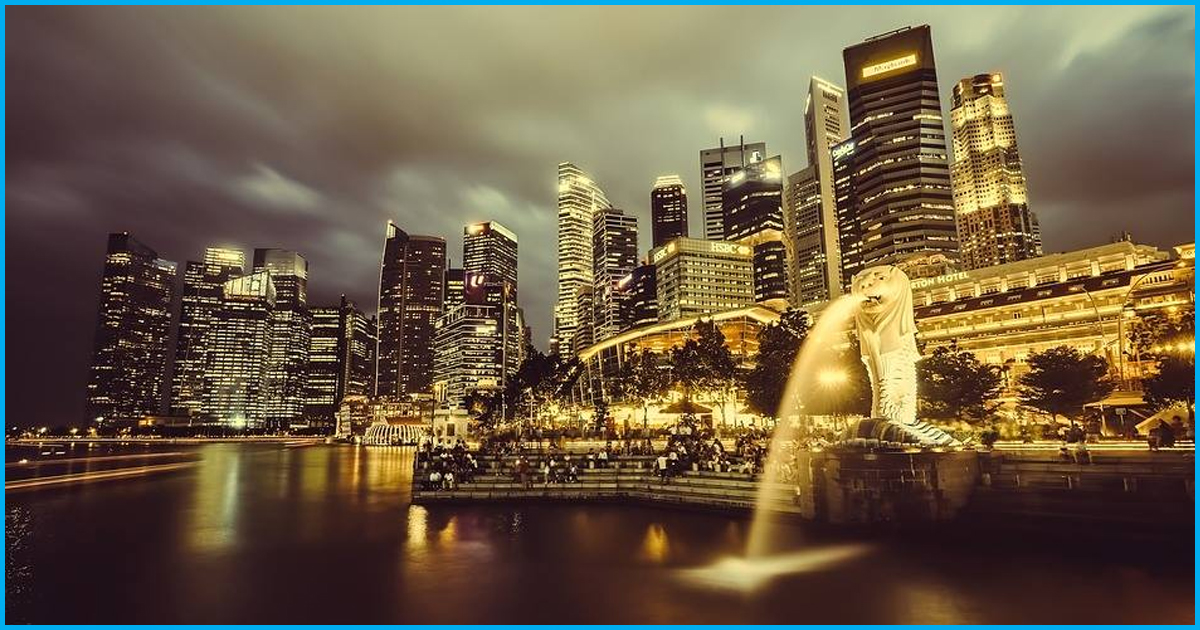
Lessons To Learn From Singapore With Water Scarcity Looming Large
4 May 2018 10:03 AM GMT
Water shortage is a crisis looming large over humanity. A recent study by Massachusetts Institute of Technology concluded that due to rapid climate change and increase in population, many places in Asia would face severe water crisis by 2050. Recently, Cape Town became the first urban city to run out of water. Water is steadily becoming a scarce source.
Singapore is a country with a population of 5.6 million. They have no aquifers or lakes and yet there is little possibility of the nation to run out of water. The reason being their equal emphasis on water supply and demanding management, long-term planning, a strong political will to implement water plans and water management by their national water agency, the Public Utilities Board (PUB).
Water supply in Singapore
In the initial years of nation-building, Singapore faced droughts, floods, and water pollution. This made them determined to strategize wisely about the future of water management. Currently, Singapore has a water requirement of about 430 million gallons a day (mgd), enough to fill 782 Olympic-sized swimming pools. 45% of the water is used for domestic purposes, and the rest is used by the non-domestic sector.
They have a well strategized and robust system of water supply called the Four National Taps comprising of (1) Water from Local Catchment, (2) Imported Water, (3) Highly-purified reclaimed water known as NEWater, and (4) Desalinated Water.

PUB says that it is even safe to drink water directly from the tap. The rooftop tanks in households are checked once a year to ensure that the quality of water is maintained. The tap water is well within international guidelines set by the World Health Organisation, as well as the United States Environmental Protection Agency’s drinking water standards.
Water from local catchment
Singapore has an area of 710 sq km and hence a lack of space to successfully collect rainwater. The positive thing is that rivers and network of canals make up for 2/3rds of the area which are channelized into 17 reservoirs.

They collect two kinds of water – 1) rainwater and 2) used water. The rainwater gets accumulated in the canals and flows down to the reservoirs and is then treated for drinking purposes. The used water flows through an underground drainage system and into a water reclamation plant. All water lines are kept separate to prevent pollution.
Singapore is one of the few countries to harvest urban stormwater on a large scale for potable consumption.
Imported Water
In 1962, a water agreement was signed which will be valid until 2061. It allows Singapore to draw 250 million gallons of water a day from the Johor River. In return, Singapore is obliged to provide treated water amounting to 2% of the water drawn. By 2061, the country plans to become self-sufficient.

NEWater
NEWater is the process that treats water into ultra-clean, high-grade reclaimed water. Currently, NEWater meets 40% of Singapore’s demand. The estimate is that by 2060, NEWater is supposed to meet 55% of Singapore’s demand. It has passed 150,000 scientific tests and is well within the World Health Organisation’s requirement.

Desalinated water
Singapore is an island country. It is surrounded by sea, and hence, PUB started to desalinate seawater to meet water requirements. Currently, there are two desalination plants with a combined capacity of 100 mgd that can meet up to 25% of Singapore’s current water demand. Three more desalination plants will be ready by 2020. By 2060, desalination is supposed to achieve 30% of Singapore’s water supply.
Water conservation efforts by PUB
By 2060, Singapore’s water demand is expected to become double the current 430 million gallons per day. To put a cap on the increase, PUB has put in place comprehensive demand management policies that include water pricing, conservation measures, and public education.
A water conservation tax was introduced in 1991 and was revised in 1997 as per economic efficiency. Although water prices have not changed between 2000 and 2017, the Singaporean government said that the prices might go up by 30% in the next two years to cover the increased costs of water supply. Low and middle-income households get vouchers which can be used for all utilities.

Since 1990, PUB has used engineering to encourage water conservation. It has mandated the use of low-flow cisterns, introduced maximum allowable flow rates for taps and mixers, and launched a Water Efficiency Labelling Scheme for the sale of taps, mixers, urinals, clothes washing machines and other products. Only appliances and machines with acceptable efficiency ratings can be sold in Singapore.
Campaigns such as save 10-lits of water a day also encourage citizens to decrease their water utility by 10-lits a day and teach them the importance of water conservation.
With efficient water management, conservation efforts and efficiency, Singapore has set an excellent example for the world to see. Countries reeling under water crisis should learn from Singapore to eradicate water shortage.
 All section
All section













